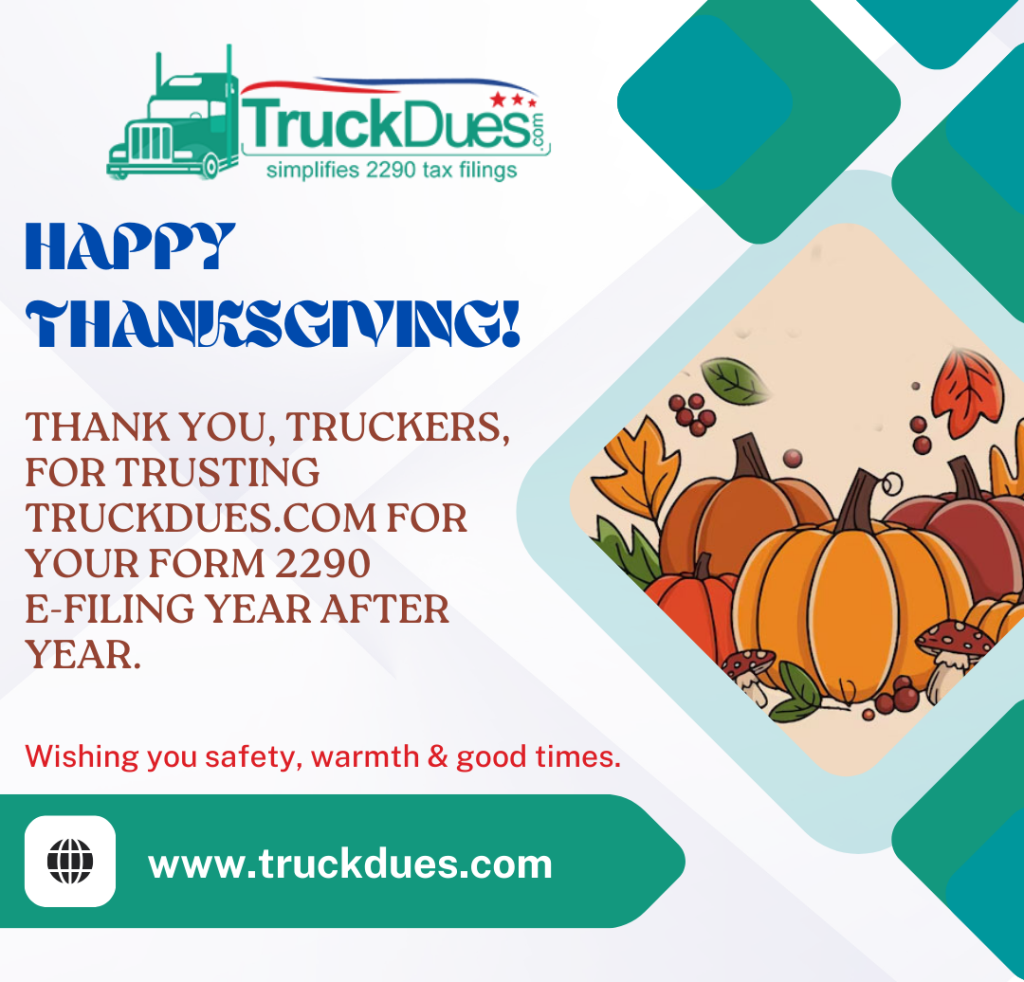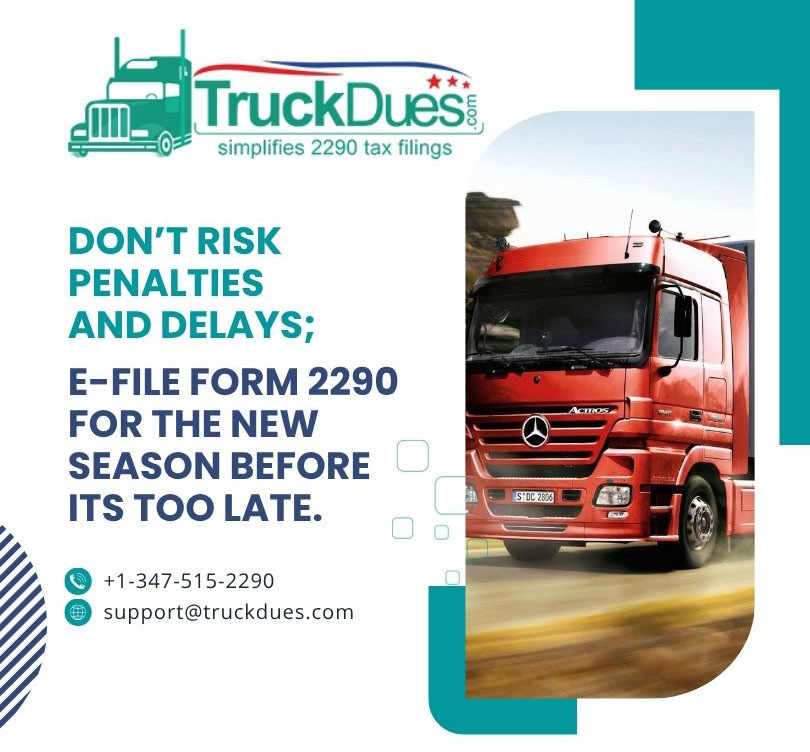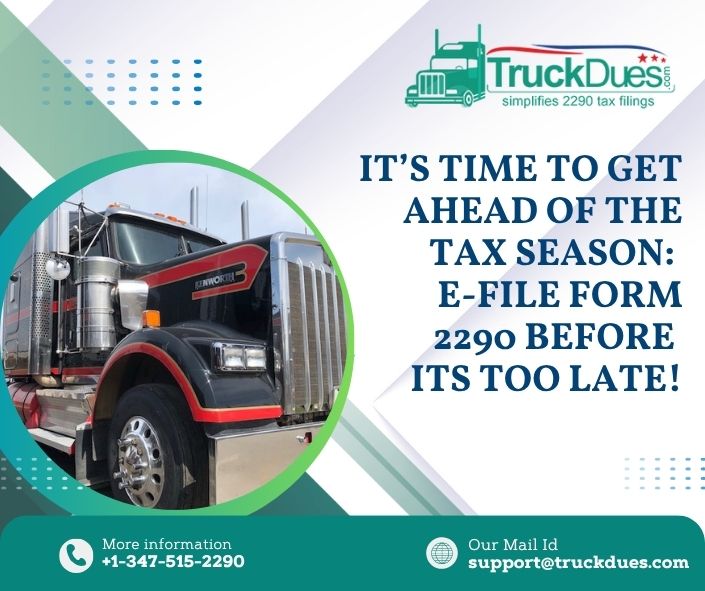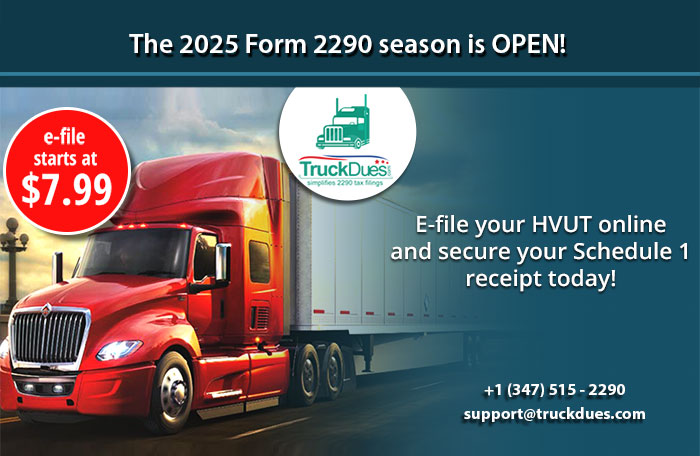As Thanksgiving approaches on November 27, we at TruckDues.com want to pause and appreciate the incredible trucking community that continues to trust us year after year. This season of gratitude reminds us how meaningful your partnership has been in shaping our journey. Every time you choose TruckDues.com for your Form 2290 HVUT E-filing, VIN corrections, amendments, or Schedule 6 refunds, you place your confidence in us—and that trust fuels our commitment to deliver accuracy, security, and a smooth filing experience.
Your continued support has helped TruckDues.com remain one of the most reliable platforms for Form 2290 online filing. We are truly grateful for the loyalty and trust you’ve shown us through every tax season.

Honoring the Truckers Who Keep America Moving
To all the truckers, fleet owners, owner-operators, and industry partners—thank you. Your dedication and resilience keep America’s economy running strong, and your trust in us motivates our team every single day. This year, we’ve witnessed once again how committed you are to staying compliant and staying on the road, and we’re honored to make your tax filing process simpler and stress-free.
Many new users joined TruckDues.com this year because of your tremendous recommendations and word-of-mouth referrals, and we cannot thank you enough. Your suggestions, reviews, and feedback continue to help us improve the platform to better serve your needs.
At TruckDues.com, our promise remains unchanged:
✔ Most affordable Form 2290 e-filing
✔ Fast processing and instant IRS Schedule 1
✔ Safe, secure, and user-friendly filing system
✔ Dedicated customer support from real people who care
If you ever need help, our support team is always just a call or email away at (347) 515-2290 or support@truckdues.com.
Looking Ahead with Gratitude and Commitment
Thanksgiving isn’t just about reflecting—it’s also about preparing for the road ahead. We are excited to continue enhancing our platform and introducing upgraded features to make Form 2290 filing easier, faster, and more intuitive in the coming year.
As you enjoy this Thanksgiving with your loved ones, know that TruckDues.com is here to take care of your filing needs—whether you choose to file today or on holidays. We’ll handle the filings so you can focus on rest, gratitude, and the holiday spirit.
Thank you for choosing TruckDues.com as your trusted HVUT partner.
Wishing you a warm, joyful, and safe Thanksgiving!








